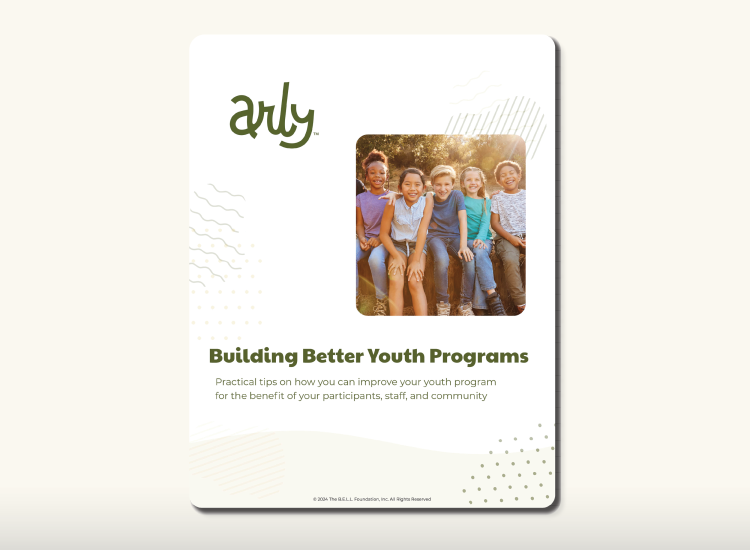Meet Student Needs with Quality Afterschool Curriculum
By Arly Communications on July 3, 2023
Afterschool and other out-of-school time (OST) programs can play an important role in supporting children’s learning and development. Among other important elements like great staff and family engagement, a program’s curriculum is key. Learn how you can select the best high-quality curriculum for your program.
Start Early
Choosing a curriculum should be a fundamental part of your program planning, so make sure you start early. Keep your program mission and student learning goals at the forefront and allow them to inform your curriculum decisions. You’ll want plenty of time before your program start date to get everything in order—especially if you end up deciding to create your own curriculum.
Coordinate with School Curriculum
Partnering with a school can be a great way to learn how to best serve kids in your community. If you’re working with a school, find out what kids are learning and how your curriculum can compliment it by reinforcing and expanding on relevant concepts. For example, if sixth graders are learning about earth science, a fossil dig or a nature hike would be a fun activity to incorporate into the curriculum.
You should also consider working with your local school district to track student progress and see how your program is making a difference. A coordinated curriculum can serve as a unified force that maximizes your impact and helps students achieve more academically.
Proactively Address Gaps
Another way you can factor in the school curriculum is by looking for possible gaps you can help fill. There’s only so much time in the school day, and budgets are limited, so teachers may be forced to prioritize certain areas and skim over others. These are opportunities where your program can shine.
According to research by Learning Heroes, the most popular reason parents cite for enrolling their kids in afterschool programs is to “[e]xpose children to new experiences, ideas, and perspectives beyond their everyday home and school lives.” Understanding the experiences, ideas, and perspectives that aren’t being covered in school can help you choose or create a curriculum that actively addresses these needs. For example, students may not be getting enough exposure to the arts, getting enough physical activity, or building life skills. Whatever it is, make sure your curriculum addresses kids’ unmet needs. This is how your program can have a major impact.
Support the Whole Child
When it comes to implementing a high-quality curriculum, it’s easy to focus on academics. But the best afterschool programs take a big-picture view of the kids they serve, striving to enrich children’s development in multiple ways, including:
- Physical development
- Academic development
- Life skills development
- Enrichment
All of these elements are connected. As Takel Shavers, youth development operations director of YMCA of Greater Richmond explains, “if a child isn’t feeling well inside or encouraged enough to be able to have control of their feelings, then they’re not going to do well academically. So it’s important to address the whole child.”
The Centers for Disease Control and Prevention (CDC) calls it the
"Whole School, Whole Community, Whole Child approach" and notes that OST programs can play an important role in extending this approach beyond the school day.
While it’s perfectly fine for an afterschool program to focus on one area (e.g. a soccer camp will naturally be predominantly focused on physical fitness while a STEM program will be more focused on academics), it’s always helpful to factor other aspects of child development into your curriculum to make it more well-rounded. For example, that soccer camp could also be helping kids build self-confidence and teamwork, and that STEM program could have kids exercise their creativity with an engineering activity like an egg drop.
Prioritize Fun
No matter what your learning goals are or what the format of your curriculum is, always remember to keep it fun! Most parents say an afterschool program’s environment is the most critical indicator of quality, and 76 percent of parents agree that the most important aspect of the environment is that the program is fun!
Part of keeping it fun is also keeping it fresh; make sure you’re not doing the same exact thing after school as the kids do during the school day.
It’s great if you can take advantage of an existing curriculum that is ready to go with ideas for fun activities and themed units. Arly offers a variety of curriculum resources and activities to help afterschool programs make learning fun.
Take Advantage of High-Quality Curriculum from Arly
Afterschool programs can be an amazing place for kids to expand their learning and enrich their lives. The right curriculum can make it all possible, but creating your own curriculum or choosing from the sea of options out there can be overwhelming.
Arly makes it easy by offering high-quality curriculum tailored to youth programs. Our curriculum is designed with a whole-child approach and can help kids have fun while they learn. What teachers and program leaders love about our curriculum is the combination of ready-to-go lesson plans and ideas combined with the flexibility to tailor the curriculum to your program.
We encourage youth programs to customize their approach according to their students’ unique needs and their school partnerships.






%20(35).png)

%20(1320%20x%20980%20px)%20(660%20x%20490%20px)%20(600%20x%20350%20px)%20(3).png)
%20(4).png)
%20(3).png)